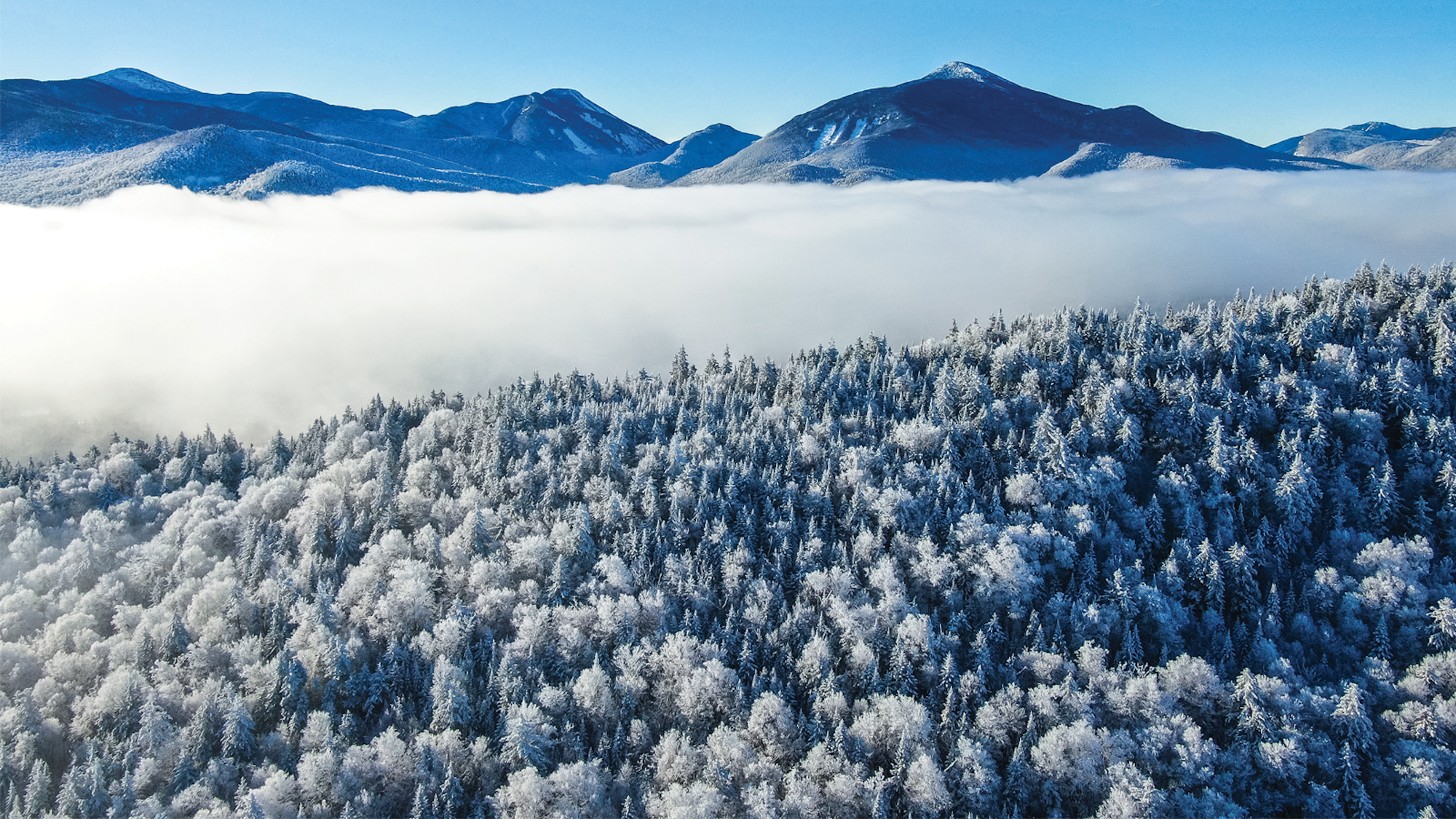WORDS — Caitlyn Kelly
PHOTOS— Nick Zachara
People don’t move to the Adirondacks to ski bum. If they say they do, they’re lying to you. More often, they came for an opportunity, stayed a few years, learned the ways of a cold, dark and fickle winter, and never left. Far from any significant East Coast snowbelt—and farther from nearly everything else—New York’s Adirondack Park is one of the largest protected areas in the Continental US. These mountains are old, too—anorthosite carved out from the last ice age. Up high, the soil is thin. Significant snowfall and landslides from summer rain create slide paths—trees, dirt, rocks and other vegetation get swept up, leaving the bedrock exposed and a new ski line in its place. The landscape ever-changing, the place maintains its wild demeanor; the tallest mountain in the Northeast, Mt. Washington, was only summited for the first time by colonists in the 1600s, and it took two more centuries to climb Mt. Marcy, the tallest peak in New York State. When the great western migration was taking place in the United States, the interior of the Adirondacks was yet to be wholly discovered.
However, since the turn of the 20th century, skiing has held its place as a longstanding tradition in the Adirondacks. Norwegian-born Herman “Jackrabbit” Smith-Johannsen has been given much credit for bringing the sport of skiing to the country, and to the Northeast, in particular. He often skied from Lake Placid to Mt. Marcy and back—an impressive feat by today’s standards—but Jackrabbit was doing the thirty-mile trip in the early 1900s on wooden skis. The 1932 and 1980 Winter Olympics in Lake Placid further solidified the Adirondacks as a winter destination and a place where skiers could put down roots and carve out a community.
Then, starting sometime in the 1970s, an underground freeride ski culture began to emerge. A collective, known as the Ski To Die Club, reigned supreme. They were a ragtag group of tele-skiers who signed trail registers throughout the High Peaks Wilderness with “SKI TO DIE,” a silent trademark of their outrageous itineraries. Members of the Ski To Die Club sought out long and fast approaches, up and over these wild mountains, down far-out drainages, crowning mountaintops farther and farther into the wilderness, pioneering lines across the Adirondacks that no one had yet dreamed about. Sneaky, infamous, strong and hardcore, this clandestine crew of skiers laid the groundwork for today’s resurgence.
While there is a bounty of ski-related history tied to the High Peaks Wilderness, it is well-known that the mountains of this region don’t offer the same high-alpine and deep powder experiences as those out west. Those who choose to ski the Adirondacks bring a different kind of commitment to the sport—one that forgives the cold and the hit-and-miss conditions for a greater purpose. These mountains are old and wise, the best kept secret in the country, if you don’t mind long approaches, perpetual bushwhacking, tight tree skiing and, sometimes, shattered objectives. The true heart and grit of an Adirondack skier is the uncanny ability to suffer, and enjoy it. So, this trip begs the question: Why would you drive five hours on the highway, comfortably coasting along and eating chips in the backseat of a crammed car, when you could just bike to the objective instead?
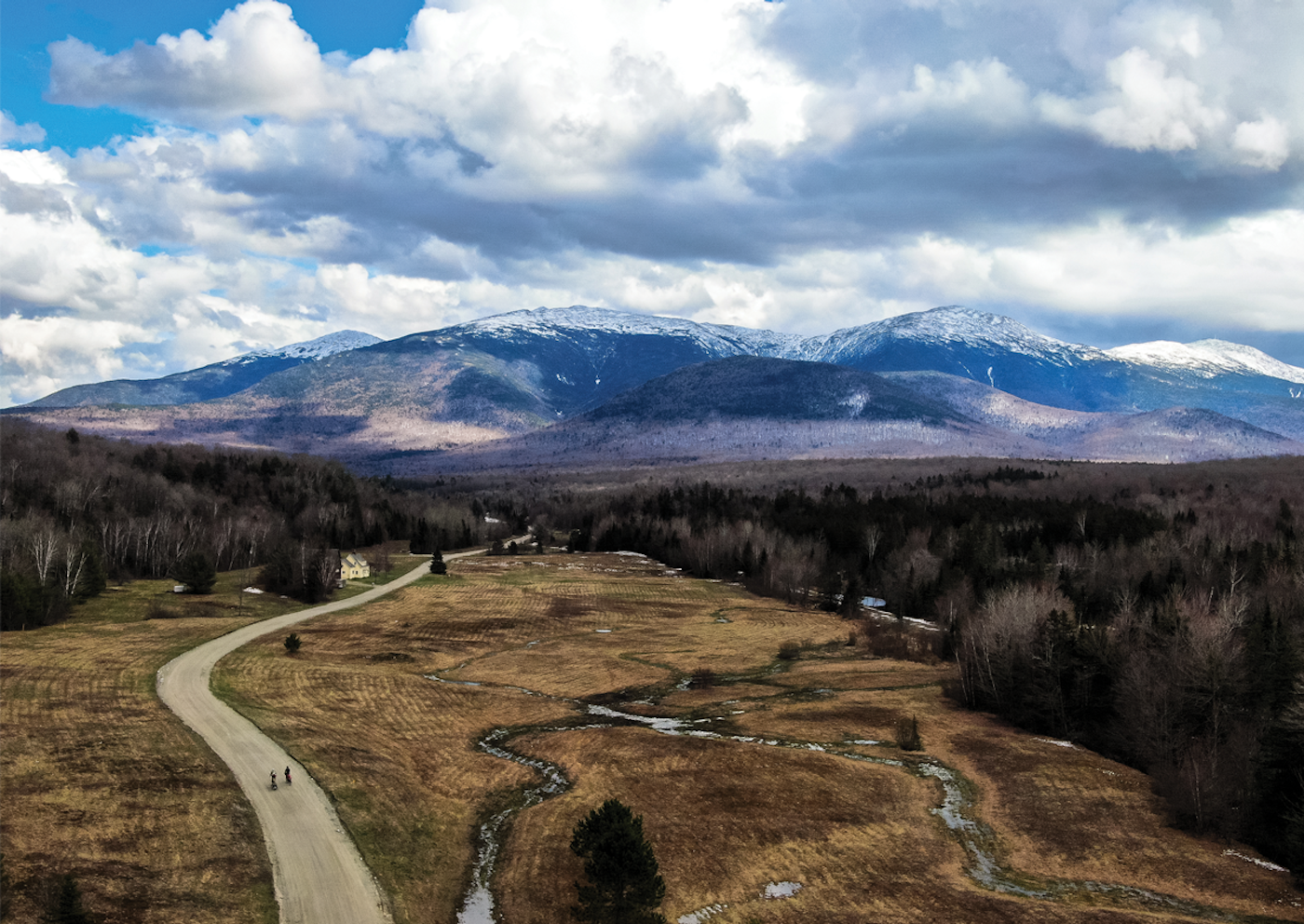
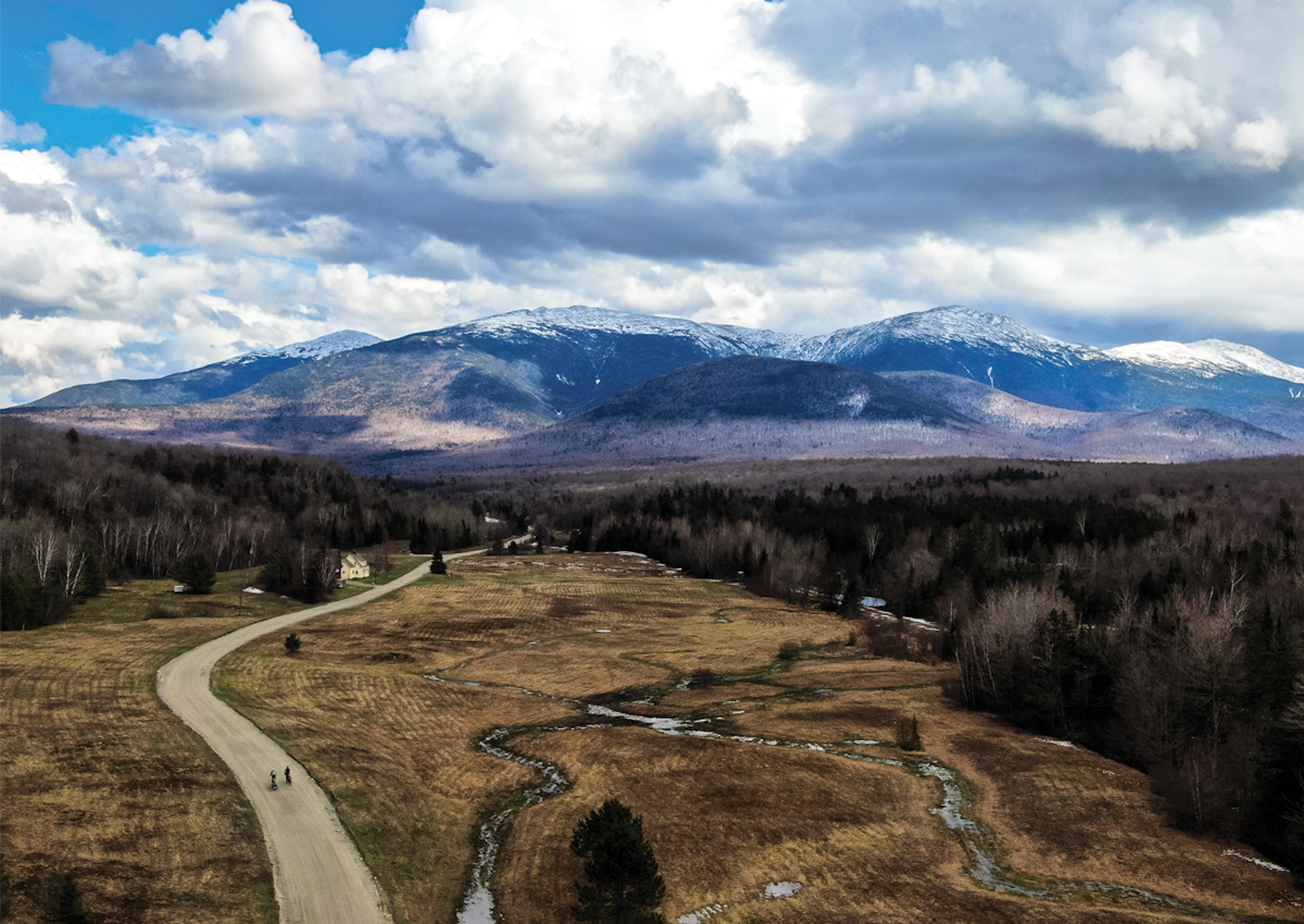

Nate Trachte and Alex Goff are a somewhat unlikely pair and are just two of the young skiers taking part in the this recent revival of the Adirondack backcountry skiing tradition. Although they both grew up in Lake Placid, New York, and skied competitively throughout high school, they take different approaches to just about everything.
Nate is thoughtful; an attentive packer, a mindful planner. He’d be the first to chat about the boreal chickadee he saw on the skin track or the clouds in the sky and what weather they might bring. When he gets quiet, you know he’s dreaming about his next big trip, putting in mental miles before the physical ones. And, when he’s out there, he’s totally present. He makes good decisions, doesn’t take shortcuts and does the right thing—the ideal adventure partner, the person you’d want by your side when things go wrong. Alex, on the other hand, is the wild child of the pair. He’s industrious and does whatever it takes to get him on the next adventure as quickly as possible. Most of the time he doesn’t even question if his body will be able to carry him up the next mountain or through the next mile. He just goes for it, and will keep going until the end—one of those incredible, naturally gifted athletes. Sometimes they refer to themselves as the “Banditos” and few weekends pass where they’re not in the High Peaks Wilderness, seeking the far-out lines christened by Ski To Die riders.
One thing Nate and Alex hold in common, though, is their passion for the Adirondacks—for all of it, not just the skiing. These are the mountains they know best, the range they’ve explored the most. They know striking out on a 20-mile day is just part of the game. There’s no beta, guidebooks or online forums; to be an Adirondack skier is to truly want it—to endure a lot of bad days just for a couple glorious ones.
Last winter, on a remote skin track deep in the High Peaks Wilderness, Nate asked Alex if he’d like to go on a long bike ride in the spring. It was their first year skiing together, checking off long-awaited objectives and making the best of a mediocre snowpack. Nate proposed a bike trip from New York’s Adirondack Mountains to Mt. Washington in New Hampshire—some 200 miles away. They’d be fully loaded with everything they’d need on the road for four days, including their ski gear. It was something Nate had been ruminating on for at least six months prior; Alex, however, was just hearing about the idea for the first time. Regardless, it felt like the only way to finish out their season together—a long and ludicrous approach to an unpredictable objective. Alex was honored, absolutely inclined to say “yes.” But there was one slight complication: neither had ever bike-packed before.
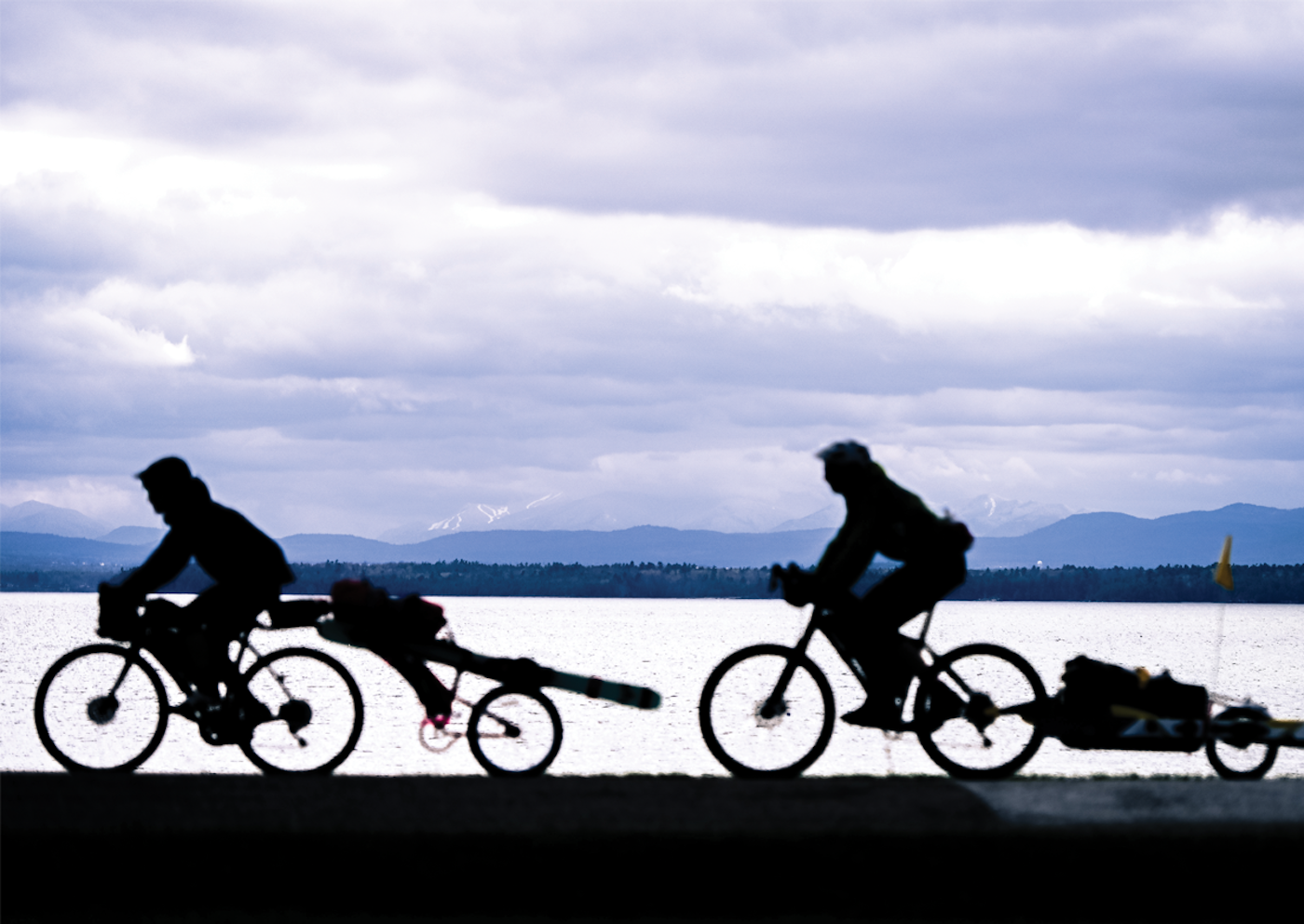
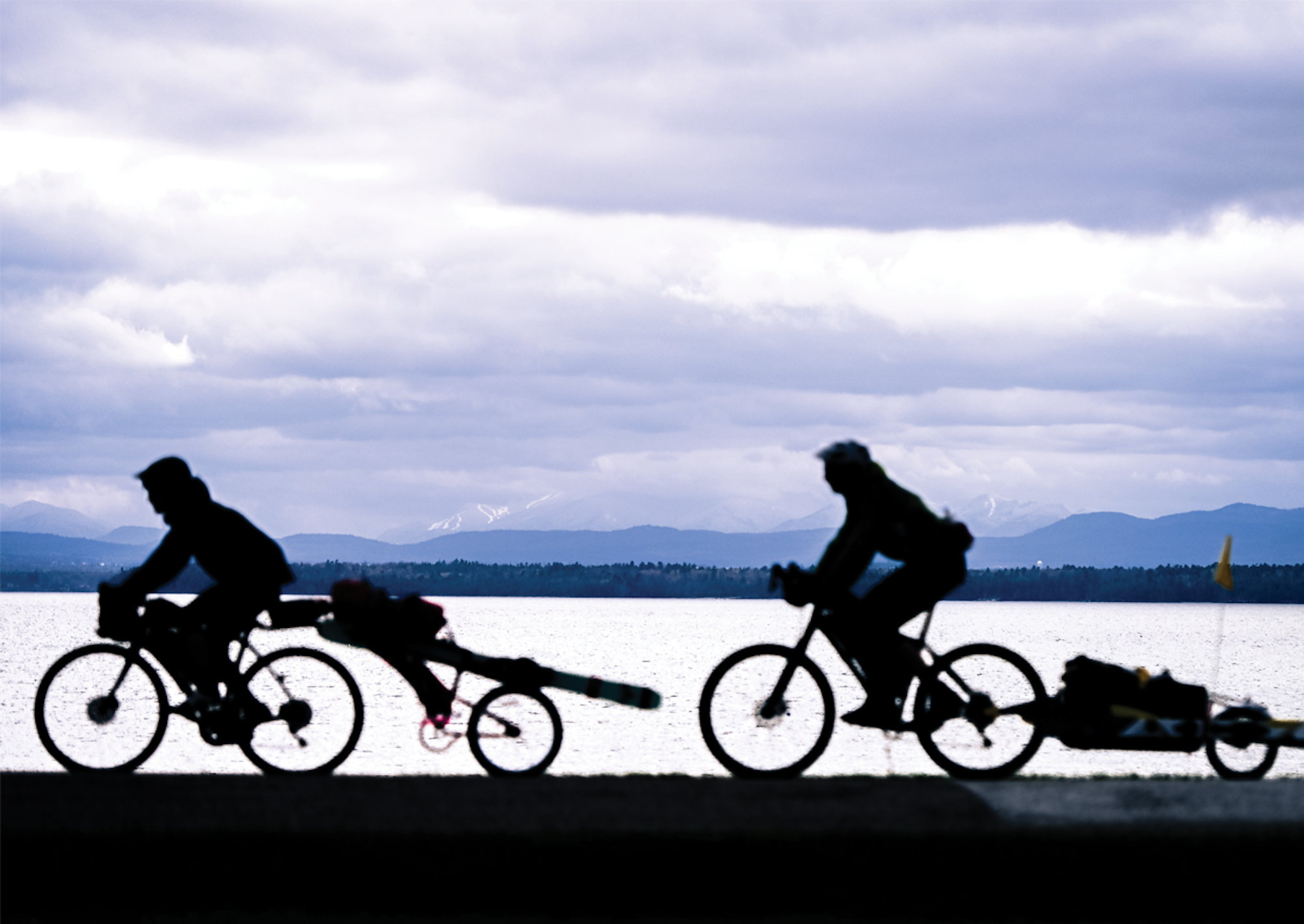
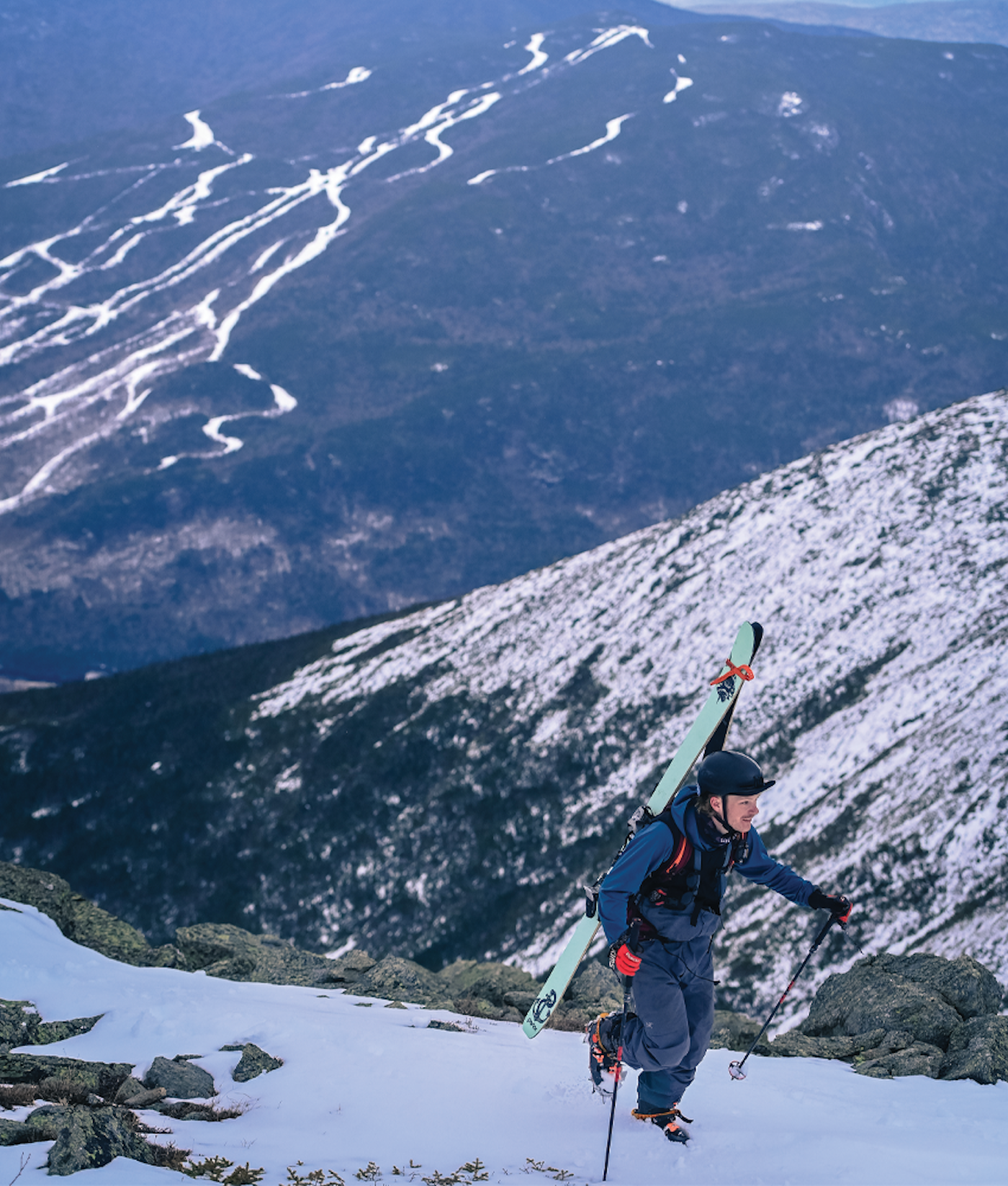

I, too, am a part of this Adirondack revival and, knowing Nate and Alex well from days in the mountains, wanted to join them on the last leg of their journey. Driving down Route 116, just outside of Littleton, New Hampshire, on Nate and Alex’s third day of biking, I saw what I was keeping my eyes out for: two bikers navigating the shoulder of a busy road, skis and trailers in-tow. Nate’s floral cutoff button up shirt billowed each time a car passed. Earlier, he told me he would wear it every day of the trip, so everybody knew he was having fun. Alongside another friend, Maddie Phaneuf, a member of the U.S. Olympic Biathlon team and an Adirondack backcountry skier herself, we drove past slowly, windows down, and gave him a wide berth while hooting and hollering. Just ahead Alex charged hard up a hill, his trailer wiggling precariously with every pedal stroke. Alex found an expired Vermont trailer license plate that he bungeed onto his ski trailer. The orange “Fiber Optic” flag he found on the side of the road flapped in the wind. Eventually passing the pair, we pulled off at the next break stop, where photographer and the sole member of the informal pit crew, Nick Zachara, was waiting, too.
When Nate and Alex arrived, we checked-in, offered much needed snacks and electrolytes and gifted them that intangible boost of energy you can get from your friends. Now in the foothills of New Hampshire’s White Mountains, the riding got steeper with every mile and, after the quick pitstop, Nate and Alex continued for about thirty more miles until we saw them again at our campsite for the night.
The last few miles of their day took them up a muddy and snowy seasonal road to the Dolly Copp campground. From there, it was about seven miles to the Pinkham Notch Visitors Center, where we planned to begin our hike to the East’s most notorious backcountry zone, Tuckerman Ravine. We talked about the trip, and Alex and Nate expressed to us how much it meant to have us all there together. Nate spoke about how we were all standing on the shoulders of giants; how they wouldn’t have been able to get there alone. He knows he wouldn’t be skiing in the Adirondacks if it weren’t for an English teacher he had in high school who’d sneak away on the weekends and ski gnarly drainages in the High Peaks and arrive back at school on Monday with that wild look in his eyes. Alex says the same about former ski coach, now good friend and adventure partner, Bill Frazer.
That night, we ate takeout on snow-covered picnic tables and drank Vermont beer. They recalled the memorable ferry ride across Lake Champlain on day one and the strange looks people gave them with their bikes, skis and gear in-tow. They told us about chickens in the road and an emu that lives on the outskirts of Burlington. How Alex almost got hit by a Prius in rush hour traffic as they were clinging to the white line, no shoulder in sight for miles. They talked about the afternoon of day two, climbing up and over the Green Mountains—the best day of gravel riding on the trip. As the light was fading on the Ammonoosuc River, they ripped downhill into New Hampshire for the last couple dozen miles, moving fast. They were riding a high, racing to their camp spot for the night. When they arrived, however, they were told they couldn’t stay there, even though RVs were parked inside, campfires ablaze. Without a campground to house them for the evening, the two were coming to terms with the thought of sleeping under a nearby bridge when Nick picked them up. They hopped in the back of his pickup truck and gorged on pizza as they drove a few miles to the nearest motel. That night Nate got sick—from the pizza or the physical exertion, he’ll never quite know.
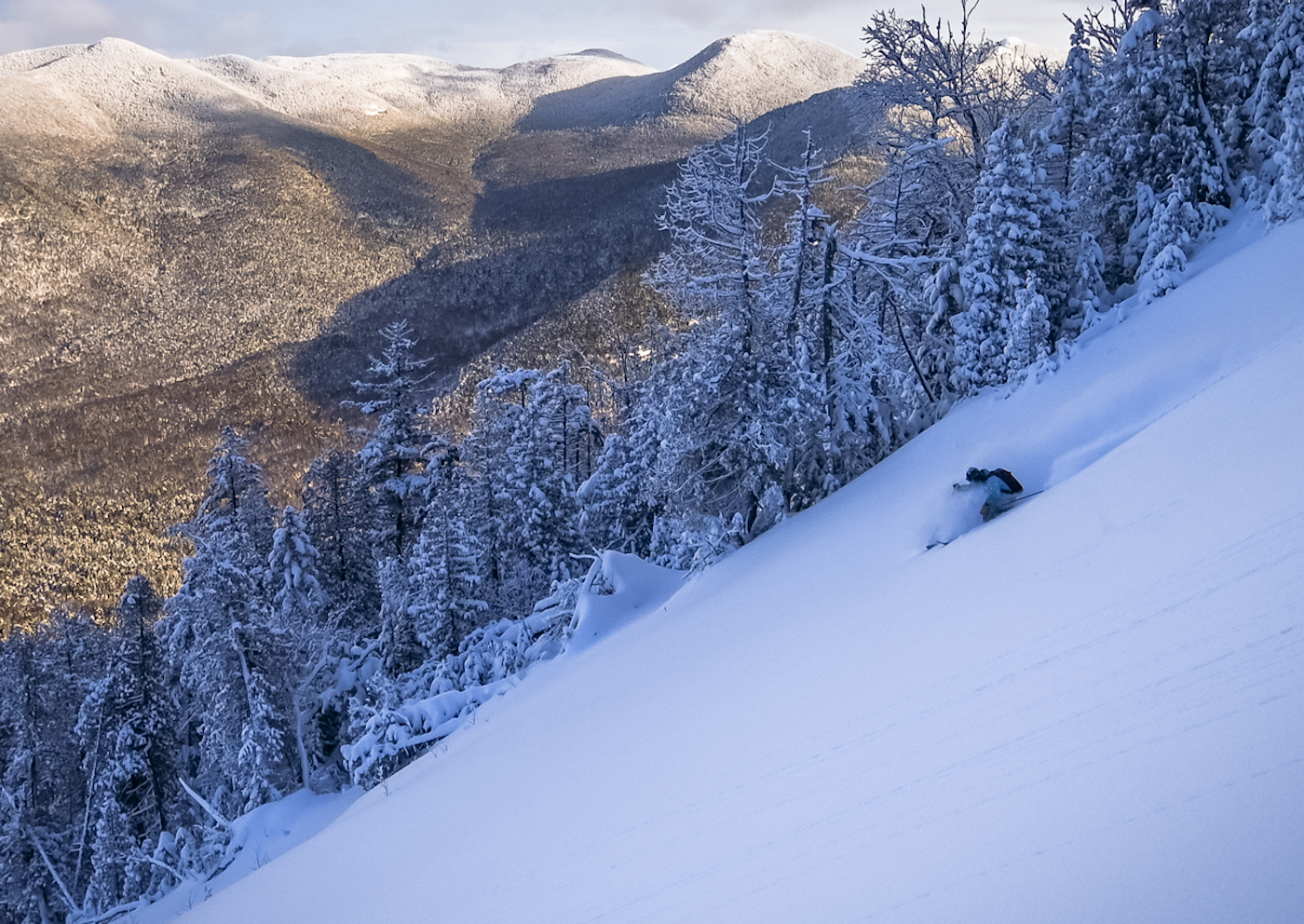
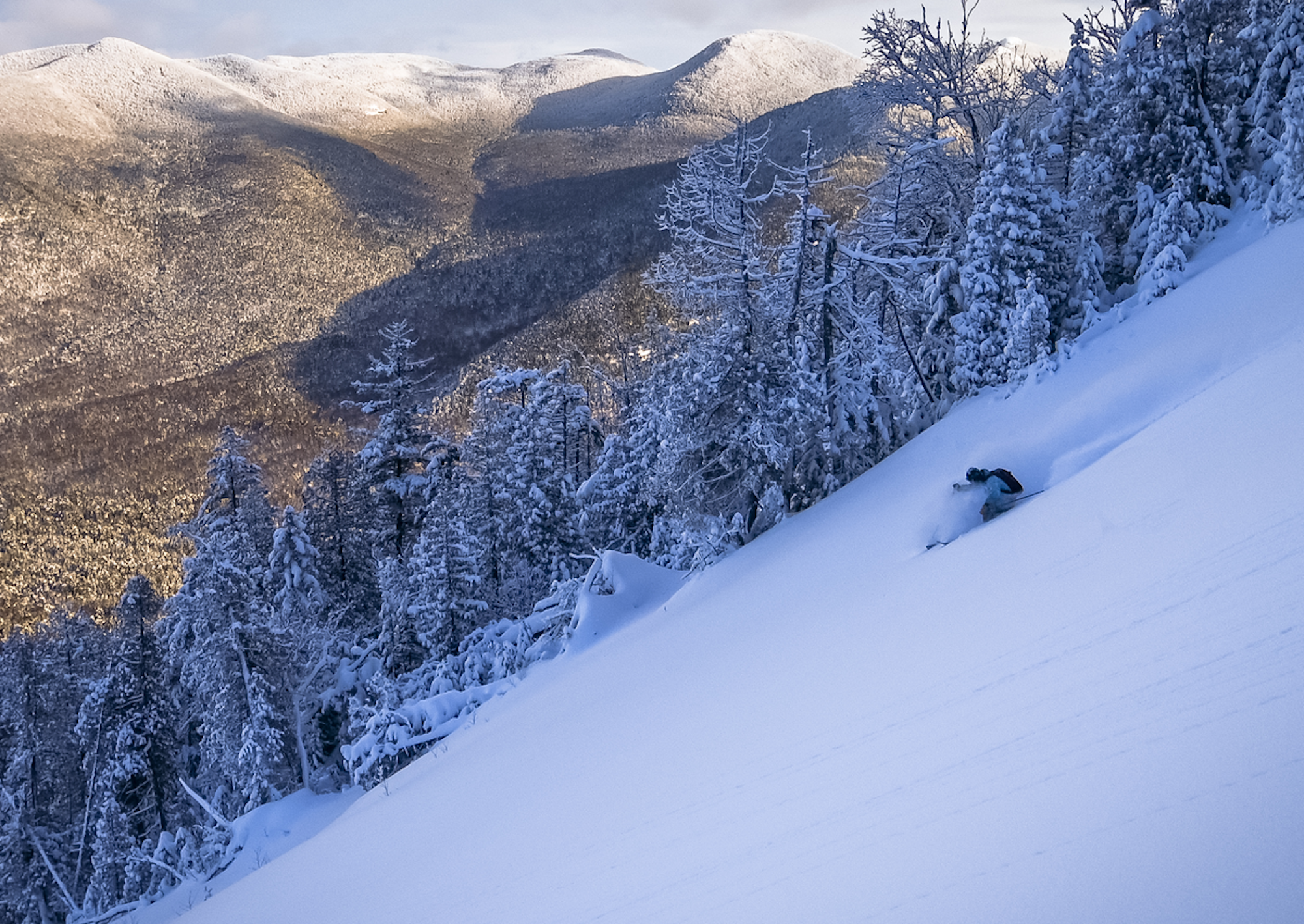
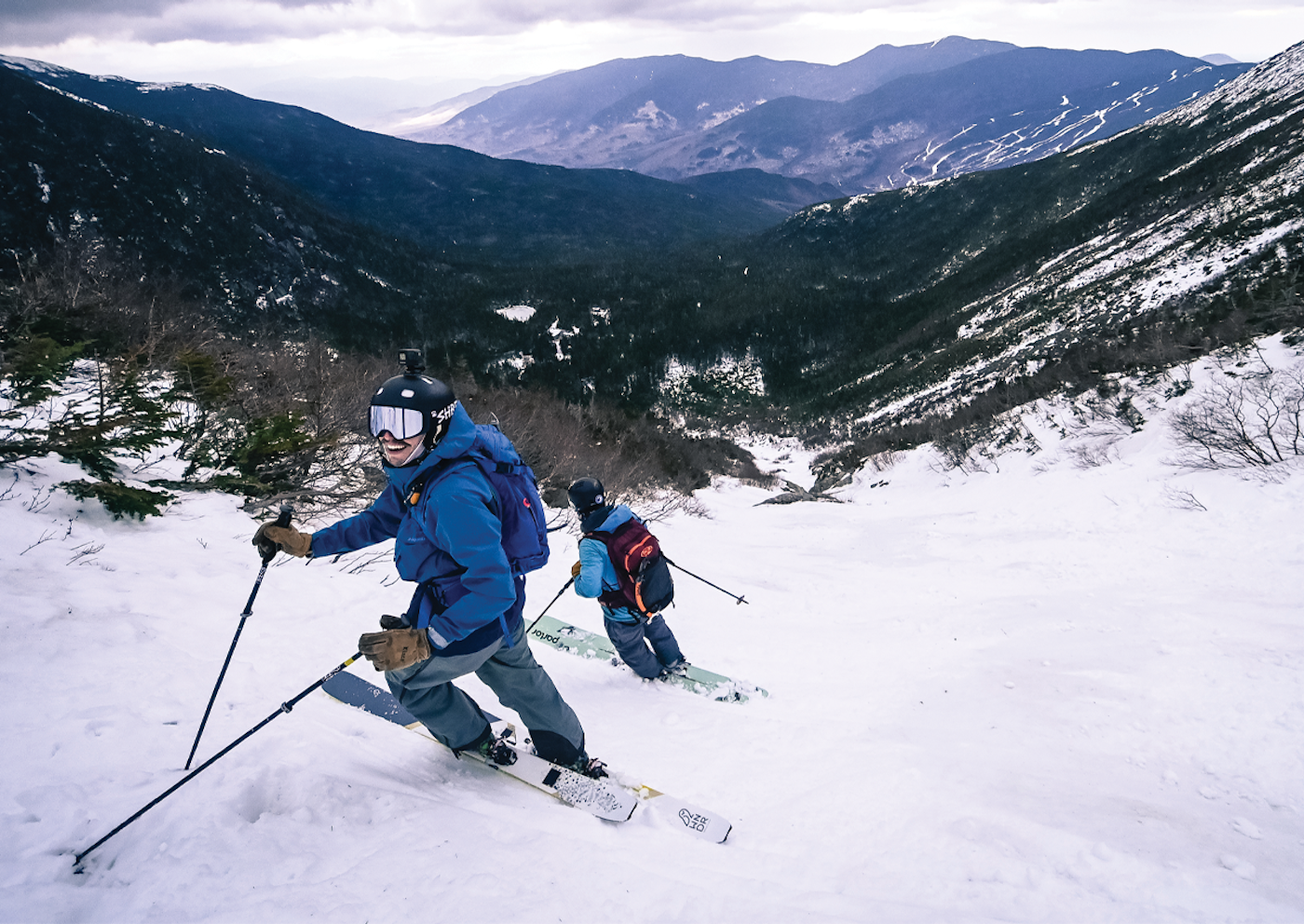
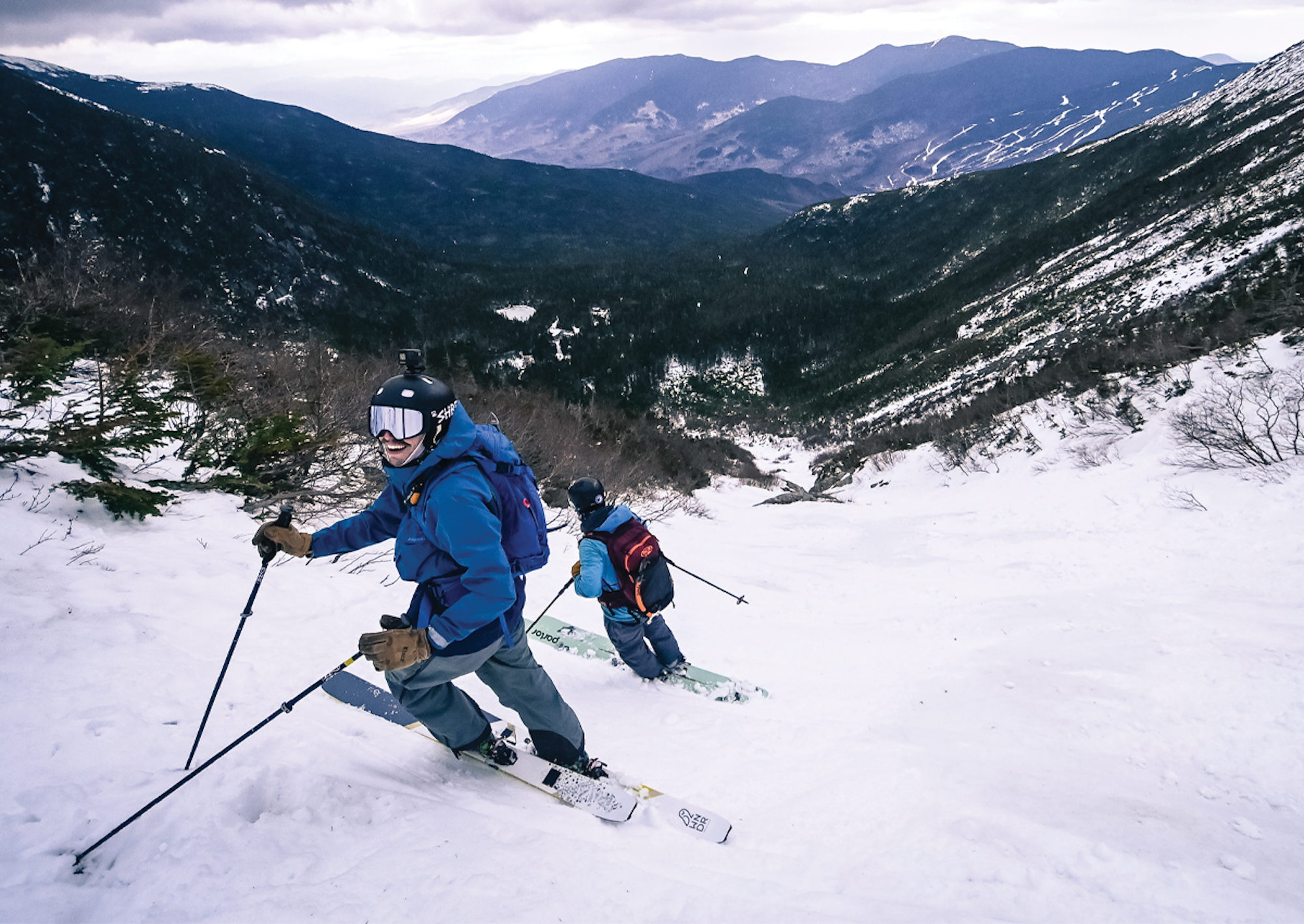
The next morning, Nate and I were the first out of our tents. We made coffee as Nick stirred and Maddie and Alex were still fast asleep in the trunk of their car. The quiet of this particular morning felt sacred, a serene start to the last day of the trip. Frost covered everything and the snow on the ground around us had completely refrozen. Up high, the peaks of the Presidential Range poked out from behind the trees, glowing pink.
After the last miles of biking and a couple of miles of hiking, we arrived at the Hermit Lake Shelter, HoJo’s for short, around mid-morning. Storm clouds grew behind the mountain, and fog cascaded down the bowl from its higher reaches. Agiocochook is Abenaki for “Home of the Great Spirit.” Many who have climbed this mountain have felt this presence. We felt it that day, too—a force to be reckoned with, a place of reverence. Thunderstorms plagued the forecast, and the last thing we wanted was to be socked-in on a fifty-degree slope. Skiing back east, you take what you can get: Our objective of skiing the bowl, the main line in Tuckerman Ravine, seemed out of the cards.
We pivoted to skiing Hillman’s Highway, still within the greater area of the ravine, but with an easy escape route that would spit us out at Sherbie, the wooded ski trail that leads back to the parking lot. As we made our ascent, we crossed paths with a few other groups with similar objectives. For whatever reason, those skiers looked to us for advice and support, asking where we were from, how we got there and what our thoughts were about the darkening skies. After Alex and Nate had biked all that way, traveling slowly through the mountains, river corridors, cities and farmlands, it seemed that they had an aura about them—something the others recognized, the energy of a goal nearly achieved.
At the top of the Hillman’s Highway, after a long and sluggish boot pack, the cloud ceiling was lowering and the wind picked up as the sweat on our bodies began to freeze. The top of Mt. Washington disappeared and reemerged from the clouds while Wildcat Mountain and its ribbons of ski trails taunted us on the other side of the valley. All of us were in our own precarious positions—that short moment between the climb and the descent, running through the motions, making sure everything was just right before that first turn, hoping our legs remembered how to ski after a couple hours of climbing.
The skiing that day was tricky—it had snowed the day before and temperatures rose to above freezing. The light was flat, too, and it was difficult to decipher the nuances of the terrain. The old snow was good and corned up, but the fresh layer of new snow was saturated and sticky. Nate dropped first. His skiing did not resemble that of someone who had just spent four days on a bike, whose knees and feet were at their limit. He made effortless turns on the wide and steep headwall, which put my nerves at ease. After a radio call to report the conditions and ensure Nick’s camera was ready to shoot the next drop, I made my first turns down Hillman’s Highway, which, after a few turns, disappears into a short, narrow couloir before opening back up with a more moderate slope angle.
Then, it was Alex’s turn to ride. He made his descent with style, catching air off moguls scattered across the lower part of the apron and making tight, racer-like turns through the otherwise tricky conditions. His skiing was clean and precise, offering no indication of the past four days spent hauling gear up and over mountain passes and across two states.
Together, we took as long as we could coming down the 1000-plus-foot, sustained forty-degree run, savoring the last turns of the season. When the mountain wouldn’t let us ski anymore, we transitioned back into hiking boots for the short walk back to the cars. Nate and Alex skied farther than all of us, the thought of walking too painful after all those miles pedaling. Alex, Nick and Maddie peeled off towards the end while I finished the last few hundred yards with Nate. He was hobbling, but in good spirits. The feeling of accomplishment was palpable and somewhat intoxicating. When we arrived in the parking lot, Nate and Alex shared a big hug and congratulations. Four days prior, Nate was at his home in the Adirondacks on Lake Champlain, feeling fresh and stretching by his bike when Alex arrived three hours late, unpacked and a bit disheveled. Now, they were at the end of their trip, objective met, sore and happy. We sat down for a long time and drank beers to celebrate. The sun was out and it was warm in the valley, but Mt. Washington was still in the clouds. We spoke with a few guys from Vermont that we had met on Hillman’s; they were tele-skiers who ripped down the run after us, and couldn’t believe Nate and Alex had biked the entire way. They were grilling, listening to music and invited us to join. That’s part of the culture of Tucks—parking lot tailgates, becoming friends with strangers. That day in the mountains brought us together, even if one group drove and another biked 200 miles to get there.
Ski culture in the Adirondacks is shifting—from secrecy to something a bit more modern. Social media helps. Nick Zachara lugs his camera gear out on most ski missions, documenting these new descents for the crew, taking videos they later set to good tunes and inspiring folks to get out there and explore on skis. They’re honest when the snow is bad, they dig pits and talk about the snowpack. There’s a growing population of locals in their 20s who are picking up skiing for the first time, too. A lot of them buy backcountry setups and start that way. Perhaps they look to guys like Alex and Nate, and the other Banditos, as inspiration for what can be accomplished in the Adirondacks. More recently, Alex, Nate and Nick have started to see the gravity of their presence, both in the mountains and online. I’ve spent weekends away from the Banditos, exploring a new zone in the woods, looking for open glades with other ski partners, but I come home and look forward to logging onto my socials to see what kind of adventure they got up to. It’s always inspiring to see how far they made it into the backcountry, what the snow was like out there, and I know I’m not the only one who feels that way. They could ski anywhere in the country, but they choose to be here. They’ll tell you that on a good day in the Adirondacks, there’s nowhere else they’d rather be skiing.

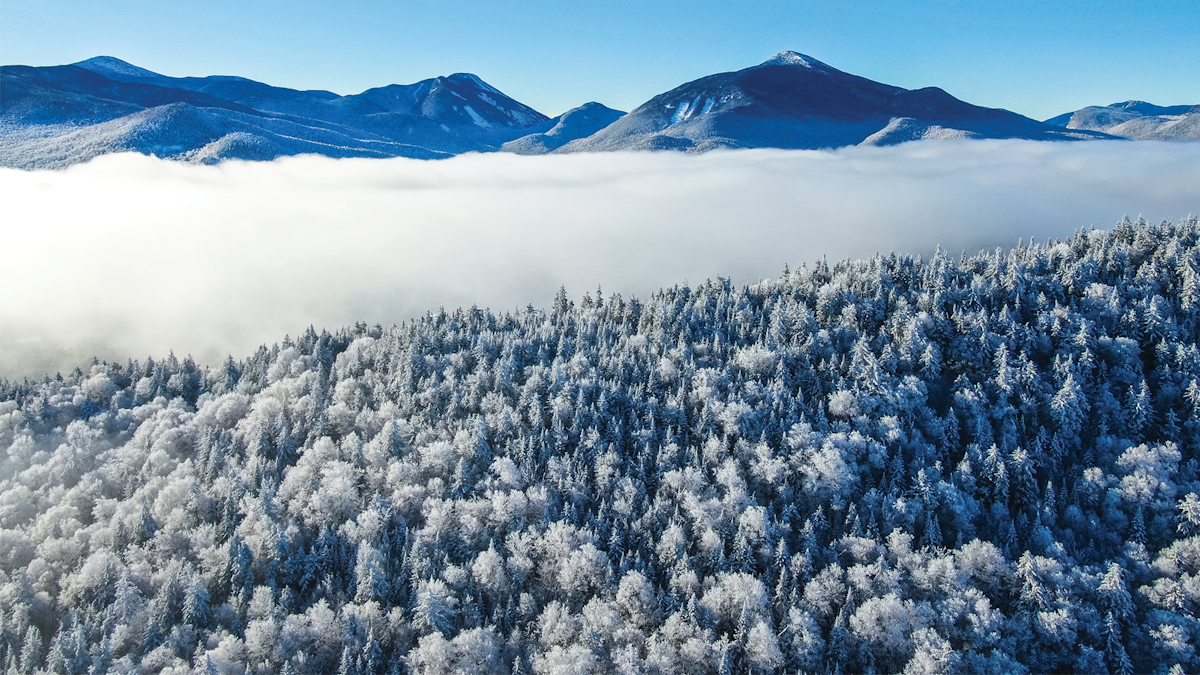


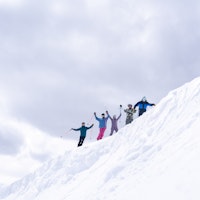
![[GIVEAWAY] Win a Head-to-Toe Ski Setup from IFSA](https://www.datocms-assets.com/163516/1765920344-ifsa.jpg?w=200&h=200&fit=crop)
![[GIVEAWAY] Win a Legendary Ski Trip with Icelantic's Road to the Rocks](https://www.datocms-assets.com/163516/1765233064-r2r26_freeskier_leaderboard1.jpg?auto=format&w=400&h=300&fit=crop&crop=faces,entropy)
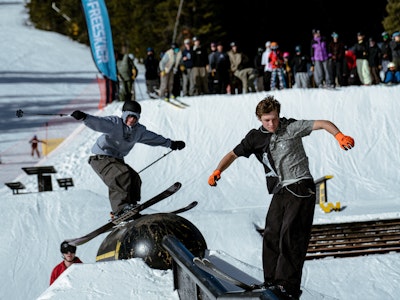




![[GIVEAWAY] Win a Head-to-Toe Ski Setup from IFSA](https://www.datocms-assets.com/163516/1765920344-ifsa.jpg?auto=format&w=400&h=300&fit=crop&crop=faces,entropy)

